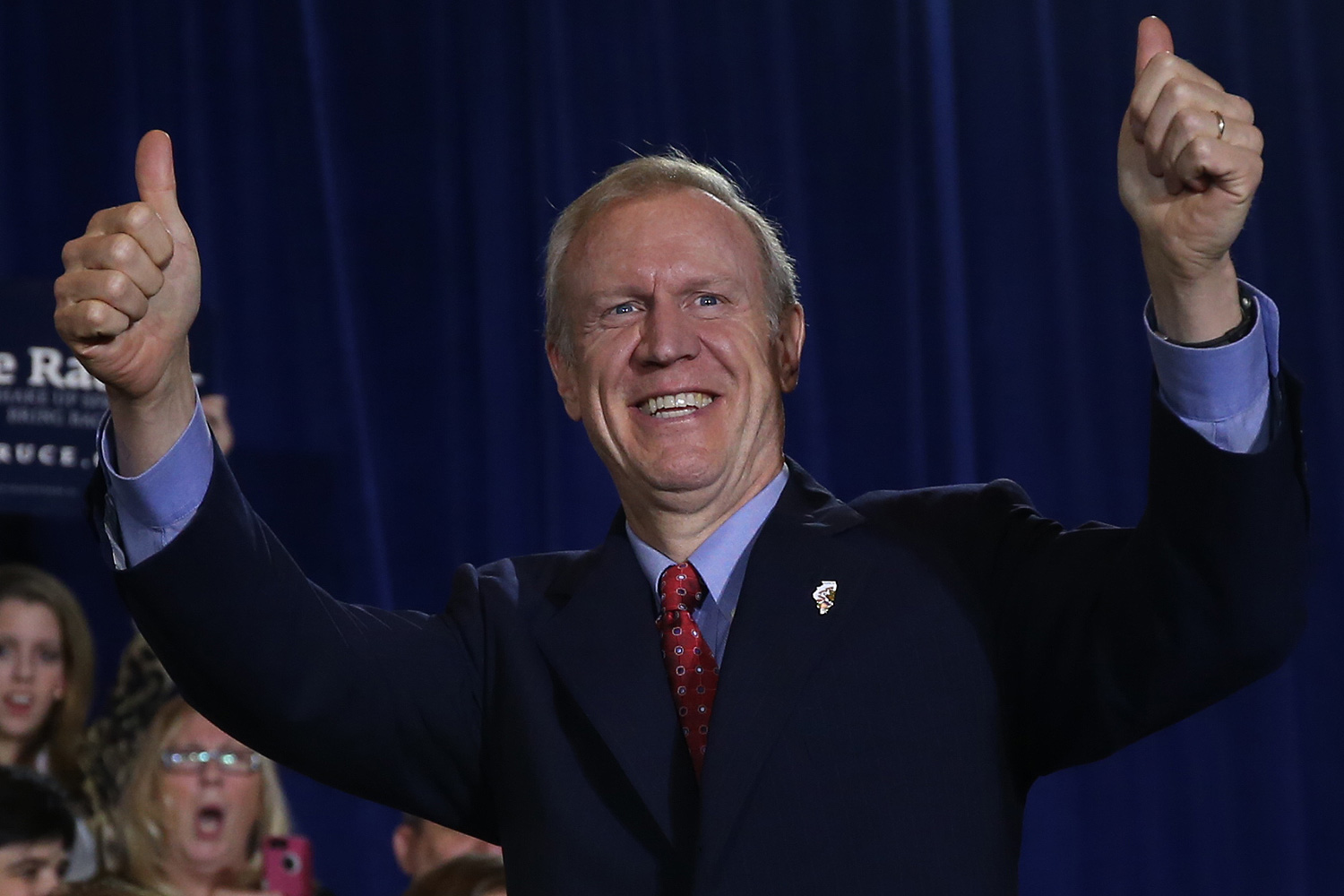Going into Election Day, Bruce Rauner had three questions to answer: Could he make gains in Chicago and Cook County? Could he make gains in the collar counties? And could he hold steady downstate?
The answer to all three was, essentially, yes. Scott Kennedy, at his excellent Illinois Election Data site, laid out Rauner's Chicagoland dilemma: hit a stated goal of 20 percent in the city (beating Bill Brady's pace by 2.6 percentage points) and hit 43-44 percent in the Cook County suburbs (beating Brady's pace by four percentage points).
Rauner got 20.8 percent in the city and 45.6 percent in the Cook County suburbs. Mission accomplished and slightly exceeded.
In the collar counties, Rauner was expected to exceed Brady, and he did, by almost seven percent, according to Kennedy's data.
But the many small counties in central and downstate Illinois were an interesting question. Rauner basically avoided "social" issues throughout the campaign, and was perceived to be weak among union members. On the other hand, Quinn made some high-profile cuts to government functions downstate, an area reliant on government employment.
What happened? It was basically a wash. Rauner outperformed Bill Brady by less than two percentage points downstate; Quinn was off his 2010 pace by less than half a percentage point.
Rauner 2014 vs. Brady 2010, by Percentage of Vote
Here's what Rauner's performance statewide looked like in comparison to Brady, by percentage of the vote in each county (with Cook only reporting 98.7 percent). Blue is areas where Rauner had a lower percentage of the vote than Brady; red is where he had a higher percentage.
Rauner fell off Brady's pace in a swath of central-western Illinois, but never by very much. The biggest difference between Rauner and Brady was -4.6 percentage points in Lee County; but Lee County is small, and ultimately Rauner received only 322 fewer votes than Brady.
Rauner 2014 vs. Brady 2010, by Raw Votes
But just because Rauner exceeded or fell below Brady's percent of the vote didn't necessarily mean he gained or lost votes. Turnout means the percentage difference doesn't necessarily correlate with the raw vote total. Blue is where Rauner had a lower vote total than Brady; red is where he had a higher one.
See the deep-red pocket? Rauner really built his numbers around Chicago, but elsewhere he did fine. Not great in central Illinois, good in downstate Illinois, but it averaged out to a respectable performance by a Republican gubernatorial candidate in the state, which was not viewed as a sure thing going into the election.
And Rauner did very well in the state's biggest counties. In the top ten by population, Rauner exceeded Brady's percentage of the vote by an average of 5.2 percent, and didn't fall below Brady's percentage in any of them.
He fell below Brady's raw total in two, McHenry and Winnebago, 4,760 in the former and 3,520 in the latter. Overall, he exceeded Brady's total by almost 50,000 votes in those counties. Cook was, as noted, very good for Rauner. But Lake was better, percentage-wise: an 8.1 percent advantage on Brady, good for an almost 12,000 vote advantage.
Low voter turnout aided Bruce Rauner in his quest to take Chicago and its suburbs. But the rest of the state mattered to him too, and there were questions whether he'd be weak enough downstate to negate his predicted gains in Democratic strongholds. Instead—because of Quinn's own weakness, Rauner's substantial ground and media games, or both—Rauner held the Republican strongholds as well, giving him an easier victory than most people, and the polls, predicted.



